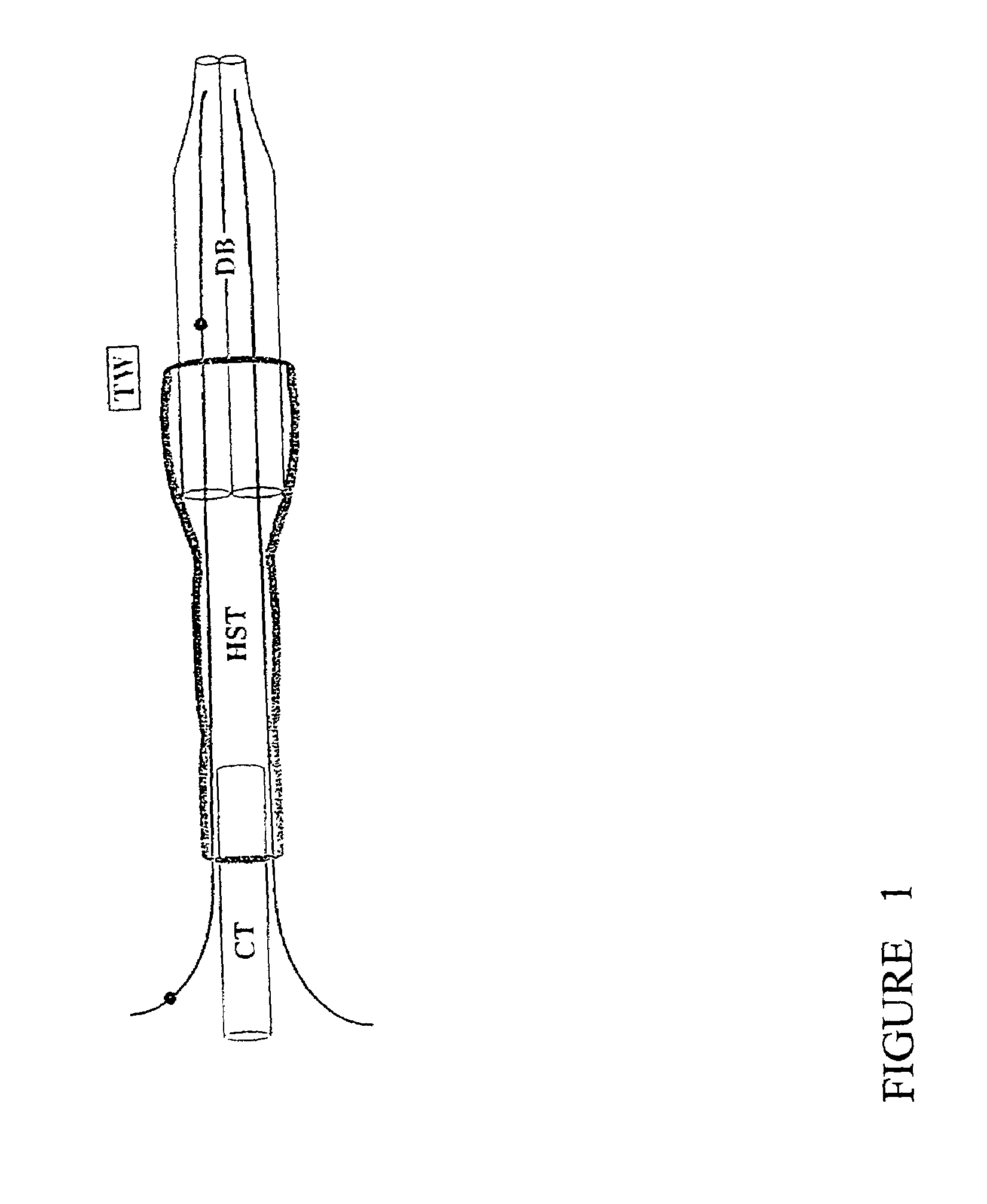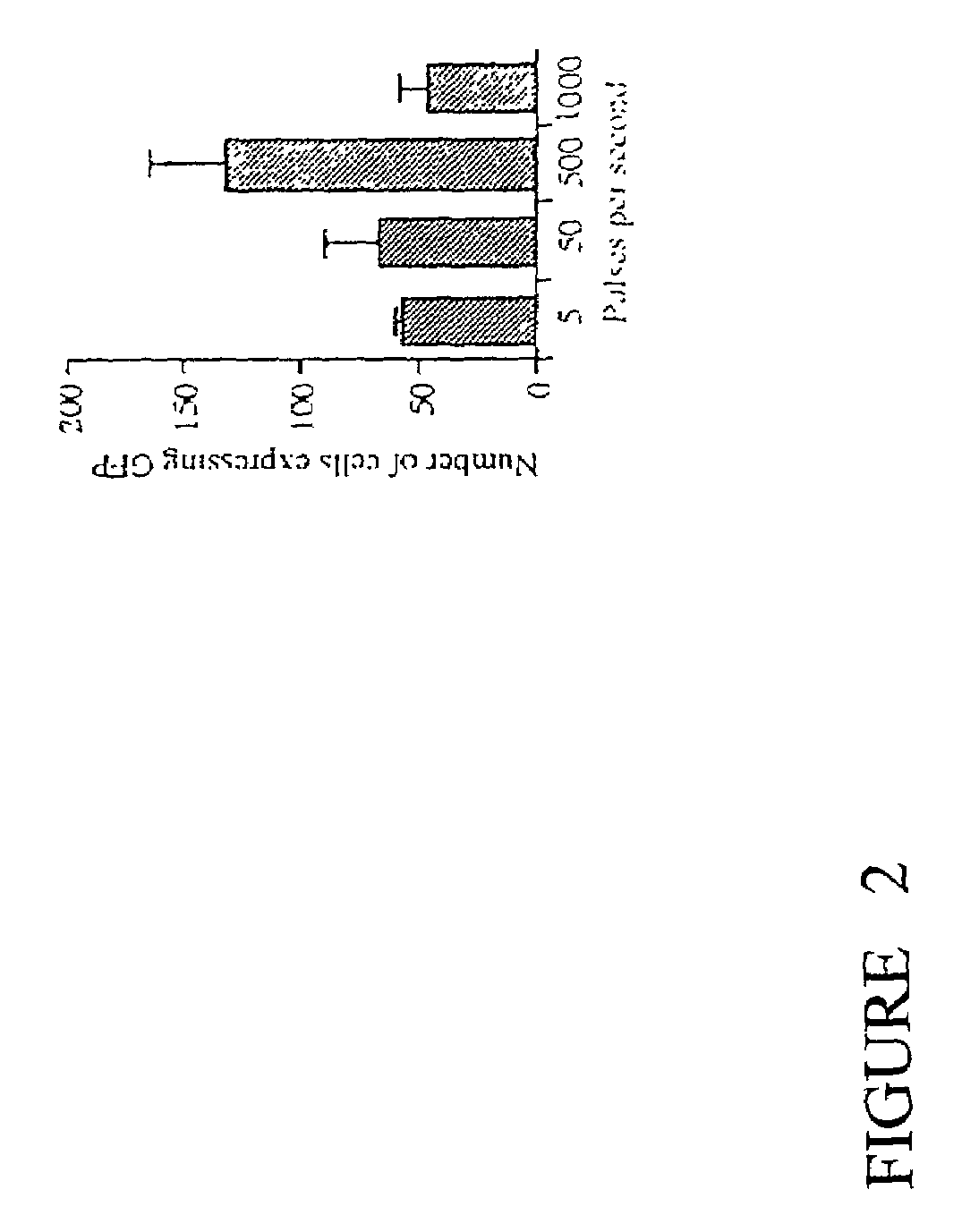Method and apparatus for targeting localized electroporation
a localized electroporation and electroporation technology, applied in biochemistry apparatus, biochemistry apparatus and processes, applications, etc., can solve the problems of inability to effectively target electroporation, lack of reproducibility, and previous electroporation efforts
- Summary
- Abstract
- Description
- Claims
- Application Information
AI Technical Summary
Benefits of technology
Problems solved by technology
Method used
Image
Examples
example 1
Electroporation of Avian Embryos
[0025]An electroporation apparatus, back-filled with DNA containing solution and driven by a conventional neurophysiological stimulator, was used to transfect plasmids containing green-fluorescent protein (GFP) into avian embryos. The electroporation apparatus was made from a 1.2 mm×0.6 mm, 4 inch, double-barrelled glass capillary tube (catalog #6070, A-M Systems) which was drawn on a vertical pipette puller (Model 700C, David Kopf Instruments), broken back to an inside diameter of 200–250 μm, and forged. Tungsten wire (catalog #7960, A-M Systems). coated with Teflon as an insulator and with the Teflon removed 5 mm from the ends, was inserted in each barrel to within 1 mm of the tip. A capillary tube mounting shaft was attached with heat-shrink tubing and sealed with epoxy (FIG. 1). This apparatus was connected with polyethylene tubing to a screw-drive syringe, and was held in a micromanipulator. The tungsten wire leads were connected to the poles of ...
example 2
In Vivo Mammalian Electroporation
[0032]The electroporation apparatus was made from a 1.2 mm×0.68 mm, 4 inch, double-barreled borosilicate glass capillary tube (catalog #6350, A-M Systems) which was drawn on a vertical pipette puller (Model 700C, David Kopf Instruments), broken back to and ground to a bevel edge with a Narashige EG-4 electrode grinder. Teflon-coated tungsten wire (catalog #7960, A-M Systems), with the Teflon removed 5 mm from the ends, was inserted in each barrel to within 1 mm of the tip. A capillary tube mounting shaft (catalog #6260, A-M Systems) was attached with heat-shrink tubing and sealed with hotmelt glue. The apparatus was held in a micromanipulator and connected with polyethylene tubing to a screw-drive syringe. The tungsten wire leads were connected to the poles of a BioRad Gene Pulser II with RF Module.
[0033]Plasmid (eGFP N1, Clontech) was diluted to 250 ng / μl in 0.85 M NaCl. Female Balb / C mice were restrained in a tube restraining device and their tails...
PUM
| Property | Measurement | Unit |
|---|---|---|
| diameter | aaaaa | aaaaa |
| diameter | aaaaa | aaaaa |
| Depth | aaaaa | aaaaa |
Abstract
Description
Claims
Application Information
 Login to View More
Login to View More - R&D
- Intellectual Property
- Life Sciences
- Materials
- Tech Scout
- Unparalleled Data Quality
- Higher Quality Content
- 60% Fewer Hallucinations
Browse by: Latest US Patents, China's latest patents, Technical Efficacy Thesaurus, Application Domain, Technology Topic, Popular Technical Reports.
© 2025 PatSnap. All rights reserved.Legal|Privacy policy|Modern Slavery Act Transparency Statement|Sitemap|About US| Contact US: help@patsnap.com



